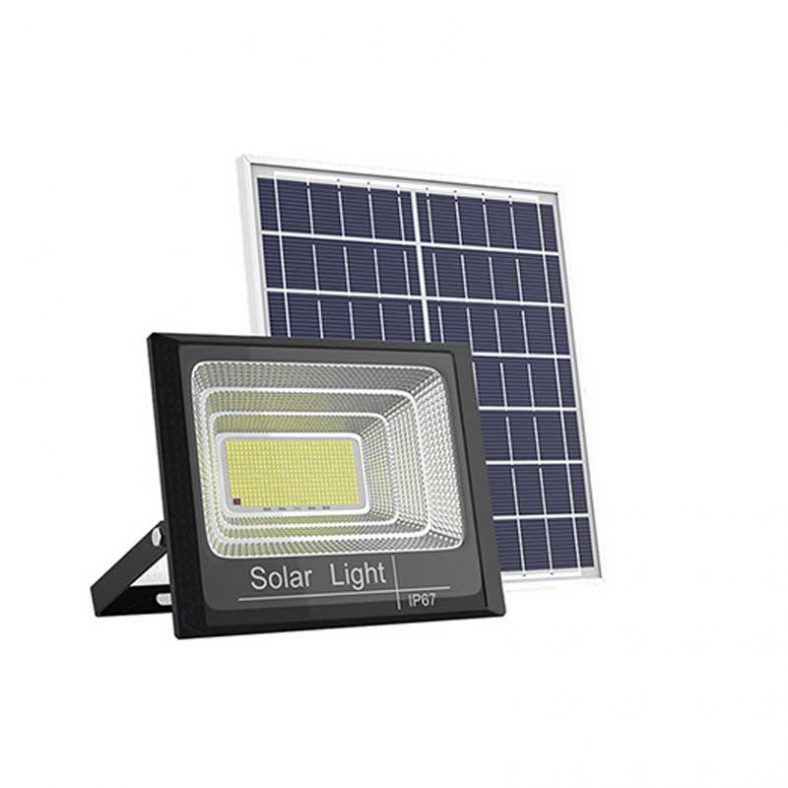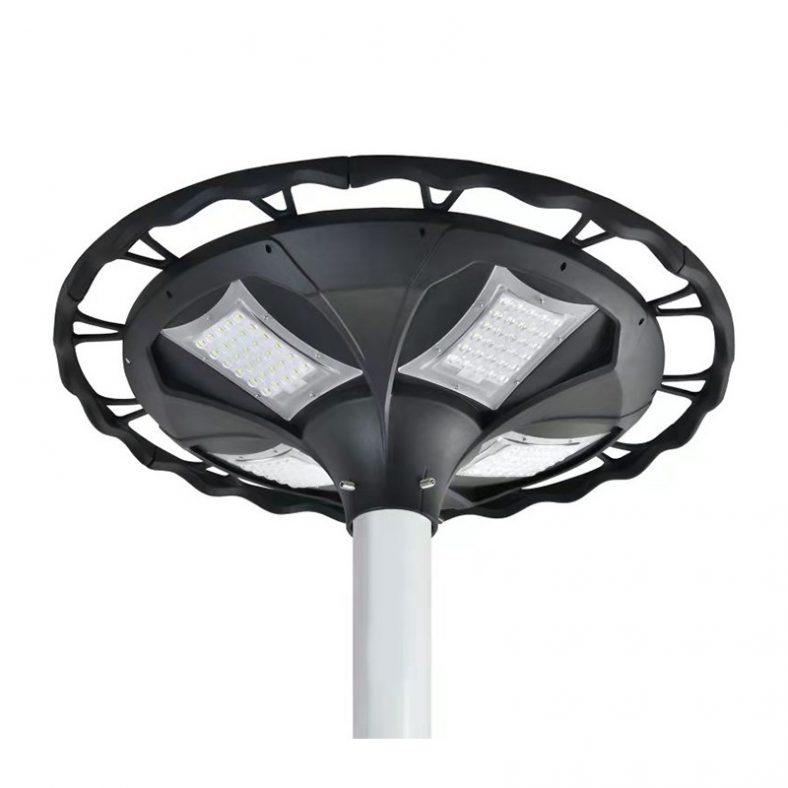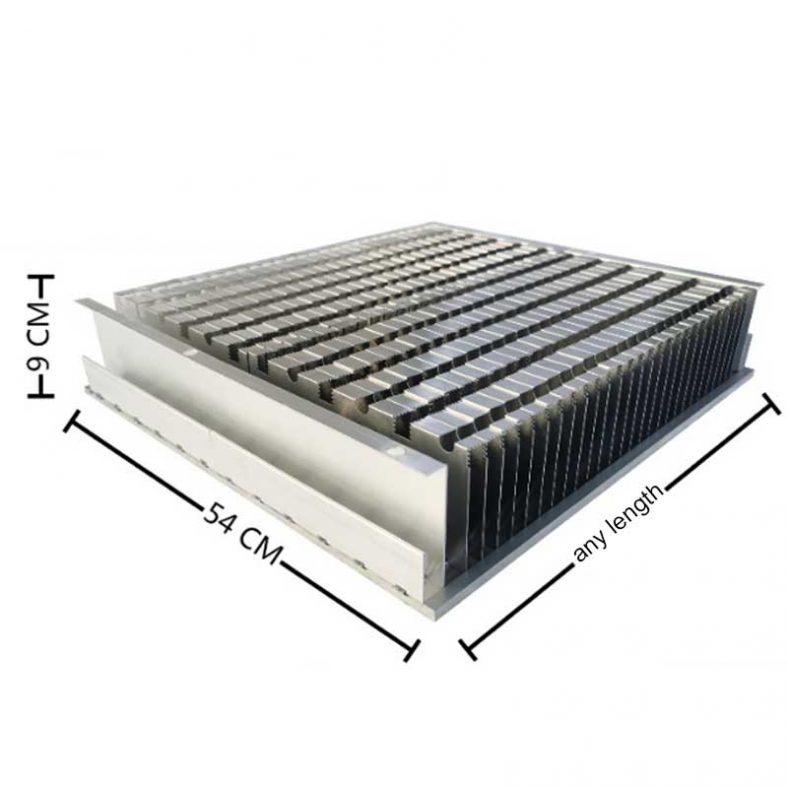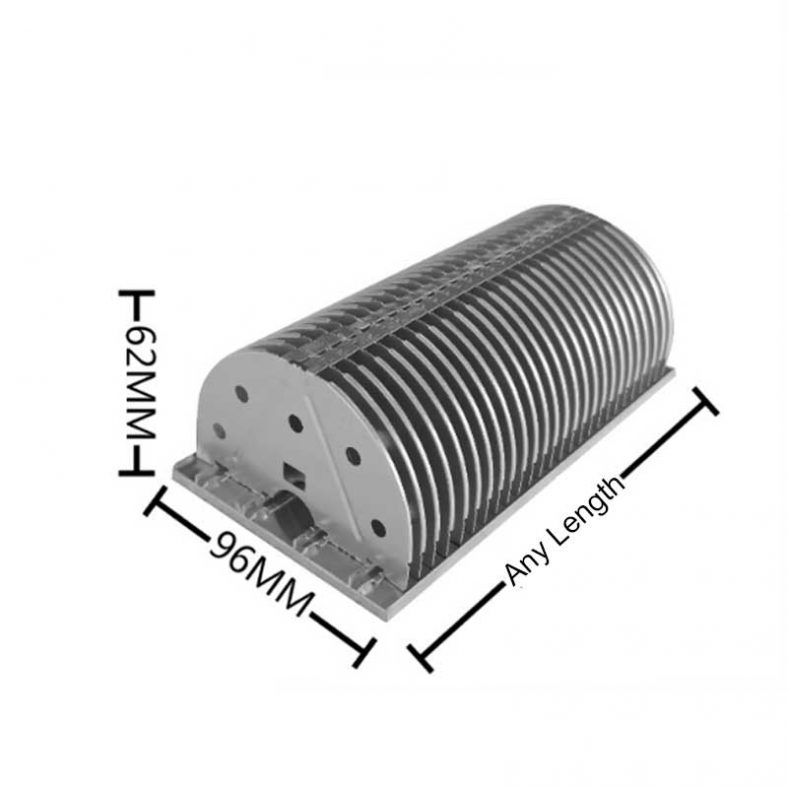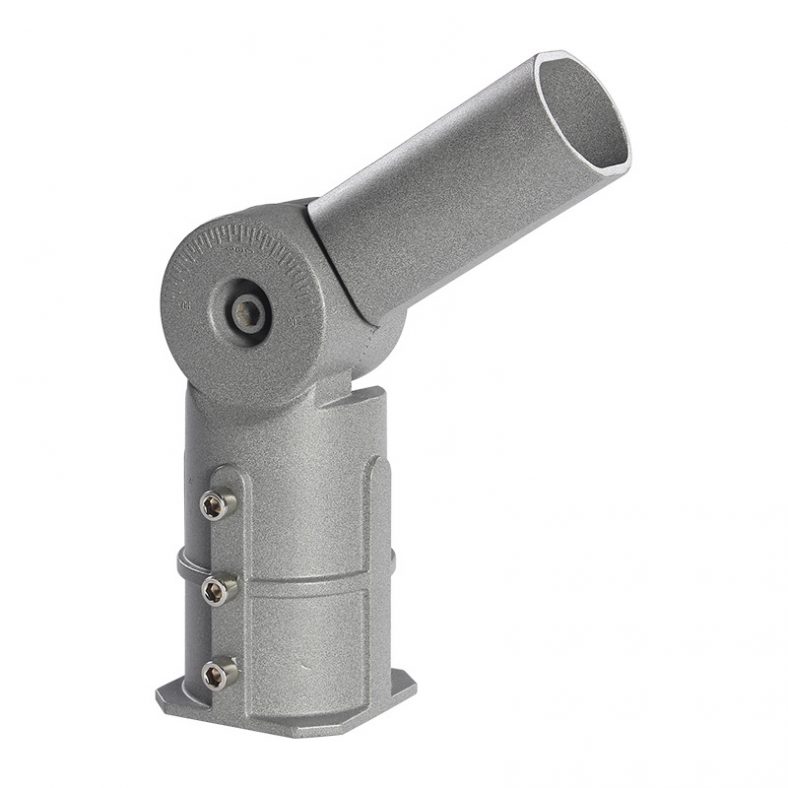
LED Solar Lights Manufacturer
LED Solar Lights to meet your every need.
Types of solar lights, such as solar LED street lights, solar garden lights, solar flood lights, solar wall pack lights, which manufacture by Wandan Lighting-best solar lights manufacturers and suppliers in China, we focus on producing LED lights more than 12 years, relating LED solar street lights over 8 years. Rich experience in solar light production allows us to manufacture high-quality outdoor solar street lights,outdoor solar garden lights, outdoor solar flood lights, outdoor solar wall pack lights. We use polysilicon solar panels and 200lm/W light-efficiency LED chips, with high-energy lithium batteries and smart controllers, so that we can provide a 2-5 years warranty for our solar lighting lamps. Contact us to get more informations about solar light bulbs and cooperate with us to boom your business.
LED Solar Lights
Wandan Lighting specialist offers a wide variety of LED Solar Lights to meet your every need.
LED solar lights are lighting fixtures that use solar energy to power LED (light-emitting diode) bulbs. These lights are designed to harness the power of the sun and convert it into electricity that can be used to illuminate outdoor spaces such as pathways, gardens, and driveways. LED solar lights typically consist of a solar panel, a battery, and an LED light source.
The solar panel is usually mounted on top of the light fixture and is responsible for capturing sunlight and converting it into electrical energy. The battery is used to store the energy generated by the solar panel during the day, and it powers the LED light source at night. LED lights are the most common type of light source used in LED solar lights because they are energy-efficient and have a long lifespan.
One of the benefits of LED solar lights is that they do not require an electrical power source or wiring, making them easy to install and use. They are also environmentally friendly, as they do not emit greenhouse gases or consume fossil fuels. Additionally, LED solar lights can help save energy and reduce electricity costs, making them a cost-effective and sustainable lighting option. However, the performance and reliability of LED solar lights can depend on factors such as the quality of the solar panel, the battery capacity, and the amount of sunlight the fixture receives.
Relate LED Solar Lights
Wandan Lighting specialist offers a wide variety of LED Solar Lights to meet your every need.
LED Solar Lights Kits/Parts
Wandan Lighting specialist offers a wide variety of LED Solar Lights to meet your every need.
LED Solar Lights Buy guide
Wandan Lighting specialist offers a wide variety of LED Solar Lights to meet your every need.
No, you cannot charge a solar panel with an LED light because LED lights do not emit the type of light that solar panels are designed to convert into electrical energy. Solar panels require sunlight, which contains a spectrum of electromagnetic radiation that includes visible light, ultraviolet light, and infrared light. The solar panel uses this energy to create an electrical current, which is then stored in a battery or used to power a device.
LED lights, on the other hand, emit a specific wavelength of visible light that is optimized for human vision and does not contain the full spectrum of electromagnetic radiation that solar panels require. While some types of LED lights may emit small amounts of UV or infrared light, they are not sufficient to charge a solar panel.
In order to charge a solar panel, it needs to be exposed to direct sunlight for a sufficient amount of time. The amount of sunlight required will depend on the size of the solar panel, the capacity of the battery, and the amount of energy required to power the device.
There are many high-quality outdoor solar motion sensor lights available on the market, and the best one for you will depend on your specific needs and preferences. Some factors to consider when choosing a solar motion sensor light include the size and brightness of the light, the detection range and angle, and the durability and weather resistance of the fixture.
It’s important to read customer reviews and compare product specifications when choosing an outdoor solar motion sensor light to ensure that you find the best option for your needs.
Cleaning solar lights is an important part of their maintenance to ensure that they function at their best and provide optimal illumination. Here are the steps to clean solar lights:
- Turn off the solar lights: Before cleaning the solar lights, turn them off to avoid electrical hazards.
- Remove any debris: Use a dry cloth or a soft-bristled brush to remove any dirt, dust, or debris from the solar panel, light fixture, and any other components.
- Clean with soapy water: Mix a solution of mild soap and warm water, and use a soft cloth or sponge to clean the solar panel, light fixture, and other components. Avoid using abrasive cleaners or scrubbers that can scratch the surface.
- Rinse with water: Use a hose or a bucket of clean water to rinse off the soap solution and remove any remaining dirt or debris.
- Dry thoroughly: Use a dry cloth or let the solar lights air dry in the sun. Make sure the solar panel and light fixture are completely dry before turning the lights back on.
- Check the battery: While cleaning the solar lights, it’s a good idea to check the battery to make sure it is fully charged and functioning properly. If the battery needs to be replaced, refer to the manufacturer’s instructions for the correct replacement procedure.
Regularly cleaning your solar lights can help improve their performance and prolong their lifespan. It’s recommended to clean them at least once a month or more often if they are exposed to dusty or dirty environments.
Yes, solar lights require direct sunlight to charge their batteries and function properly. The solar panel on the light absorbs sunlight during the day and converts it into electrical energy, which is stored in the battery. This energy is then used to power the light at night.
If the solar panel is not exposed to direct sunlight, it will not be able to charge the battery efficiently or fully. Even partial shade or indirect sunlight can reduce the charging capacity of the solar panel, which can result in dim or intermittent light output at night.
To ensure that your solar lights receive the maximum amount of sunlight, place them in an area that receives direct sunlight for at least 6-8 hours per day. Avoid placing them in shaded areas or under trees, as this can reduce their charging capacity. If necessary, you can clean the solar panel periodically to remove any dirt or debris that may be blocking sunlight from reaching the panel.
It’s important to note that solar lights may not function as well during cloudy or rainy weather, as the reduced amount of sunlight can limit their charging capacity. However, most solar lights are designed with a backup battery or low-power mode that can extend their runtime during periods of low sunlight.
Solar lights work by using a solar panel to convert sunlight into electrical energy, which is then stored in a rechargeable battery. This energy is used to power an LED light at night.
Here’s how solar lights work in more detail:
- Solar panel: A solar panel is mounted on the top of the light and absorbs sunlight during the day. The solar panel is made up of photovoltaic (PV) cells, which convert sunlight into direct current (DC) electricity.
- Battery: The DC electricity produced by the solar panel is stored in a rechargeable battery, which is usually located inside the light fixture. The battery is designed to store enough energy to power the light for several hours at night.
- Controller: A controller is used to manage the flow of electricity from the solar panel to the battery and to the LED light. The controller ensures that the battery is charged properly and that the light turns on and off at the appropriate times.
- LED light: An LED light is used to illuminate the area around the solar light. LEDs are very energy-efficient and long-lasting, making them ideal for use in solar lights.
- Sensor: Some solar lights are equipped with a sensor that detects when it is dark outside and turns on the LED light automatically. Other solar lights have a manual switch that allows you to turn the light on and off manually.
- Enclosure: The solar panel, battery, controller, and LED light are housed in a weather-resistant enclosure that protects them from the elements.
Overall, solar lights are a sustainable and eco-friendly lighting option that can be used in a variety of outdoor applications. They are easy to install and require little maintenance, making them a convenient and cost-effective lighting solution.
Solar lights usually have an on/off switch to allow the user to manually control the light. The switch enables the user to turn the light off when it’s not needed, for example, during the day when the solar panel is charging the battery, or when there is already enough ambient light available to provide illumination.
Having an on/off switch also helps to conserve battery life and prolong the lifespan of the light. By turning off the light when it’s not needed, the battery will last longer and require fewer replacements over time.
Additionally, some solar lights have different operating modes, such as a low-light mode or a motion-sensor mode. An on/off switch allows the user to switch between these modes or to turn off the motion sensor if it’s not needed.
In summary, the on/off switch on solar lights provides the user with greater control over the light’s operation, conserves battery life, and allows the user to switch between different operating modes.
Solar lights can still charge on cloudy days, although their charging efficiency will be reduced compared to sunny days. This is because solar panels rely on sunlight to generate electricity, and cloudy conditions reduce the amount of sunlight reaching the solar panel.
However, most solar lights are designed to be able to charge in low light conditions, including cloudy days and even in the shade. Some higher-end solar lights may have more efficient solar panels and be better at charging in cloudy conditions than lower-end models.
It’s important to note that the amount of light the solar panel receives will directly affect the amount of energy the battery can store and, therefore, the runtime of the light. On cloudy days, the light may not stay illuminated for as long as on sunny days due to the reduced energy stored in the battery.
Yes, solar lights can work in winter, but their performance may be affected by the colder temperatures, shorter daylight hours, and snow cover.
During winter, the reduced sunlight and shorter daylight hours can result in reduced charging capacity for the solar panel, reducing the energy stored in the battery and, therefore, the runtime of the light. Additionally, snow can cover the solar panel, preventing it from charging effectively.
However, modern solar lights are designed to work in all types of weather conditions, including winter. Some high-quality solar lights may come with larger solar panels and batteries, which can help them cope better with the reduced sunlight during winter months.
It’s important to place the solar light in a location that receives as much sunlight as possible during the winter months. Additionally, it’s essential to keep the solar panel clean and free of snow or debris that can obstruct the panel’s ability to charge. Regular maintenance and cleaning of the solar light can help ensure its performance during the winter months.
To keep solar lights from falling over, here are a few tips:
- Choose the right location: When installing solar lights, choose a location that is flat and stable. Avoid placing them on uneven surfaces or on a slope where they may be more likely to tip over.
- Secure them with stakes: Most solar lights come with stakes that can be inserted into the ground. Make sure to push the stakes firmly into the ground to provide a stable base for the light.
- Use a mounting bracket: If you’re installing solar lights on a hard surface like a deck or patio, use a mounting bracket to secure the light in place. This will help prevent it from falling over or being knocked down.
- Group lights together: If you have multiple solar lights, group them together to create a more stable base. This will help distribute the weight and reduce the likelihood of any individual light tipping over.
- Use additional support: For particularly tall or heavy solar lights, you may want to use additional support like a metal stake or a concrete block. This will help keep the light upright and prevent it from toppling over.
The mass-to-light ratio of the solar system is not a well-defined quantity, as it depends on what we consider to be part of the system and how we measure the “light” emitted by it.
If we consider the entire solar system, including the Sun, the planets, asteroids, and other bodies, the mass-to-light ratio would be very large, since the vast majority of the mass is in the Sun, which does not emit visible light. However, if we consider only the planets and other reflective bodies in the solar system, the mass-to-light ratio would be much smaller.
Similarly, if we measure the “light” emitted by the solar system in the visible part of the electromagnetic spectrum, the mass-to-light ratio would be very small, since most of the light is emitted by the Sun. However, if we include other types of radiation like infrared, ultraviolet, and radio waves, the mass-to-light ratio would be larger.
Overall, the concept of a mass-to-light ratio for the solar system is not very meaningful or useful, as it depends on how we define and measure the system.
Most LED solar lights are designed to turn on and off automatically based on the level of daylight. However, some solar lights come with additional controls that allow you to adjust their settings or turn them on and off manually. Here are some ways to control LED solar lights:
- Manual on/off switch: Some solar lights have a switch that allows you to turn them on and off manually. This can be useful if you want to conserve battery power or if you want to turn the lights on during the day for maintenance or testing purposes.
- Motion sensor: Some solar lights are equipped with a motion sensor that turns the light on when it detects movement and turns it off after a set amount of time. This can be a useful feature for security lights or outdoor lights that are only needed when someone is in the area.
- Timer: Some solar lights come with a timer that allows you to set the amount of time the light will stay on after it is triggered. This can be useful for security lights or outdoor lights that need to stay on for a certain amount of time after they are activated.
- Brightness control: Some solar lights have a brightness control that allows you to adjust the brightness of the light. This can be useful if you want to conserve battery power or if you want to adjust the light level based on your specific needs.
- Remote control: Some solar lights come with a remote control that allows you to adjust their settings from a distance. This can be a useful feature if the lights are installed in hard-to-reach areas or if you want to adjust the settings without having to physically access the lights.
Overall, LED solar lights are designed to be easy to use and require minimal maintenance. Most solar lights will turn on and off automatically based on the level of daylight, but if you need additional control, be sure to choose lights with the features you need.
The working voltage of LED solar lights can vary depending on the specific product and design. Generally, most LED solar lights have a working voltage of between 1.2 and 3.7 volts. This is because they are powered by rechargeable batteries, which typically have a voltage range of 1.2 to 3.7 volts.
The solar panel on the light converts sunlight into electrical energy, which is then stored in the battery. When the light is turned on, the battery supplies power to the LED light source, which typically requires a low voltage to operate. The exact working voltage of the LED will depend on its specific design and the number of LEDs in the light.
It’s important to note that the working voltage of LED solar lights is different from the voltage of the solar panel. The solar panel typically generates a higher voltage than the LED requires, but this voltage is regulated by the battery and other components in the light to ensure that the LED receives the correct voltage and operates correctly.
If you are interested in purchasing an LED solar light, be sure to check the manufacturer’s specifications for the working voltage and other technical details to ensure that the light is suitable for your needs.
Solar lights are designed to work primarily with solar energy, which means they require direct sunlight to charge their batteries. However, it is possible to charge solar lights without sun using alternative light sources or charging methods. Here are some methods you can use:
- Charge with artificial light: You can charge solar lights with artificial light sources, such as incandescent or LED lights. Place the solar light in front of the light source for several hours to charge the battery. Keep in mind that the charging time may be longer than with direct sunlight.
- Charge with a flashlight: If you don’t have access to an artificial light source, you can charge solar lights using a flashlight. Hold the flashlight directly over the solar panel and leave it there for several minutes to charge the battery. Repeat this process until the battery is fully charged.
- Charge with a USB cable: Some solar lights come with a USB cable that allows you to charge the battery with a computer or other USB-enabled device. Simply plug the USB cable into the solar light and the USB port, and allow the battery to charge.
- Replace the battery: If the solar light battery is no longer holding a charge, you may need to replace it with a new one. This is an easy process and replacement batteries can be purchased at most hardware or home improvement stores.
While it is possible to charge solar lights without sun, keep in mind that direct sunlight is the most efficient and reliable method for charging solar lights. To ensure optimal performance, it’s best to place solar lights in areas that receive ample sunlight during the day.
Installing LED solar lights is generally straightforward and can be done by most homeowners with basic DIY skills. Here are some general steps to follow when installing LED solar lights:
- Choose the location: Select a location that receives ample sunlight during the day and is within range of the area you want to illuminate. Ensure that the location is stable and level to prevent the light from being knocked over.
- Assemble the light: Follow the manufacturer’s instructions to assemble the light. This may include attaching the solar panel to the light, inserting the battery, and connecting any wiring.
- Mount the light: Mount the light in the chosen location using the hardware provided. This may involve screwing the light to a wall or post or inserting it into the ground.
- Test the light: Turn the light on and test it to ensure that it is working properly. If the light does not turn on, check the battery and connections.
- Adjust the settings: Some LED solar lights have adjustable settings, such as brightness or motion sensitivity. Follow the manufacturer’s instructions to adjust the settings to your liking.
- Maintain the light: Periodically clean the solar panel and light to ensure optimal performance. Replace the battery as needed.
It’s important to note that the installation process may vary depending on the specific LED solar light and its mounting requirements. Always follow the manufacturer’s instructions and any local codes and regulations when installing outdoor lighting. Additionally, if you are not comfortable working with electrical components, consider hiring a professional to install the lights.
If your solar light sensor is not working properly, there are several things you can do to fix it:
- Clean the solar panel: A dirty or dusty solar panel can prevent the sensor from receiving enough sunlight to charge the battery. Clean the solar panel with a soft cloth or brush to remove any debris or dirt.
- Check the battery: If the battery is old or has not been charged properly, it may not be providing enough power to the sensor. Replace the battery with a new one or make sure it is charging properly.
- Adjust the sensor position: The sensor may be obstructed or not facing the right direction, which can prevent it from detecting motion or light. Adjust the sensor position so that it is facing the right direction and is not obstructed by any objects.
- Check the wiring: If the wiring is loose or damaged, it can cause the sensor to malfunction. Check the wiring connections to make sure they are secure and not damaged.
- Reset the sensor: Some solar lights have a reset button that can be pressed to reset the sensor. Check the manufacturer’s instructions to see if your solar light has a reset button and how to use it.
By following these steps, you can fix most solar light sensor issues and get your solar light working properly again. If the problem persists, you may need to replace the sensor or contact the manufacturer for further assistance.
The lifespan of solar lights can vary depending on several factors, including the quality of the materials used, the type and size of the battery, the amount of sunlight the solar panel receives, and the weather conditions in your area. On average, high-quality solar lights can last between 5-10 years or even longer with proper care and maintenance.
Here are some factors that can affect the lifespan of solar lights:
- Battery: The battery is a critical component of solar lights, and its lifespan can vary depending on its quality and capacity. Lithium-ion batteries tend to last longer than other types of rechargeable batteries, and larger batteries will typically last longer than smaller ones.
- Solar panel: The solar panel is responsible for converting sunlight into electrical energy to charge the battery. If the solar panel is damaged or becomes less efficient over time, it can affect the charging capacity of the battery and reduce the lifespan of the light.
- Weather conditions: Extreme temperatures, high humidity, and exposure to moisture can all affect the lifespan of solar lights. It’s important to choose lights that are designed to withstand the weather conditions in your area and to protect them from exposure to moisture.
- Maintenance: Regular cleaning and maintenance can help extend the lifespan of solar lights. Keep the solar panel free of dirt and debris, and replace any damaged or worn components as needed.
In general, solar lights can last for several years with proper care and maintenance. Be sure to choose high-quality lights from a reputable manufacturer, and follow the manufacturer’s instructions for installation, use, and maintenance to get the most out of your solar lights.
To clean solar light panels, you will need:
- Soft cloth or sponge
- Warm water
- Mild soap or detergent
- Bucket
Here are the steps to clean solar light panels:
- Turn off the solar light and remove it from its mounting or stake.
- Use a soft cloth or sponge to remove any dirt, debris, or grime from the solar panel’s surface. Be gentle to avoid scratching the panel.
- Fill a bucket with warm water and add a small amount of mild soap or detergent.
- Dip the cloth or sponge into the soapy water and wring it out until it’s damp but not soaking wet.
- Gently wipe the solar panel with the damp cloth or sponge, paying special attention to any stubborn dirt or stains.
- Once you have finished cleaning, rinse the solar panel with clean water to remove any soap residue.
- Use a dry cloth to wipe the solar panel dry or leave it to air dry.
- Re-install the solar light.
It’s essential to clean solar light panels regularly, especially if the panels are located in a dusty or dirty area. Dirty solar panels can reduce the efficiency of the solar light, reducing the amount of energy the solar panel can absorb from the sun, and reducing the light’s runtime.
A 10-lumen solar light produces a relatively dim light, suitable for marking pathways or accenting garden features. The brightness of a solar light is measured in lumens, which is a unit of measure for the amount of visible light emitted by a source.
To put it into perspective, a typical 60-watt incandescent light bulb produces around 800 lumens, while a 100-watt bulb produces around 1600 lumens. So, a 10-lumen solar light is much dimmer than a standard light bulb.
However, the brightness of a solar light also depends on the size and design of the light, as well as the quality of the solar panel and battery. Higher-quality solar lights may produce brighter light even with lower lumens, while lower-quality solar lights may not produce sufficient brightness despite having a higher lumen count.
It’s also important to note that the perceived brightness of a solar light can vary depending on the surroundings and the time of day. In a dark environment, a 10-lumen solar light can still be visible, but it may not be enough to provide adequate illumination for functional purposes.
Solar lights may stop working for several reasons, including:
- Battery failure: The rechargeable battery in a solar light may degrade over time, lose its ability to hold a charge, or fail completely, which can prevent the light from turning on or staying on for very long.
- Dirty solar panel: If the solar panel on a solar light becomes dirty or covered with debris, it may not be able to collect enough sunlight to charge the battery, which can cause the light to stop working.
- Faulty wiring or circuitry: The wiring or circuitry in a solar light may become damaged or disconnected, which can prevent the light from turning on or charging properly.
- Damaged photovoltaic cell: The photovoltaic cell in a solar light, which converts sunlight into electricity, may become damaged or broken, which can prevent the light from working properly.
- Old or worn-out LED: The LED in a solar light may become old or worn out, which can cause it to produce less light or stop working altogether.
- Extreme weather conditions: Solar lights may be affected by extreme weather conditions, such as heavy rain or snow, extreme heat or cold, or high winds, which can cause damage to the light or prevent it from working properly.
To avoid these problems, it is important to choose high-quality solar lights, install them in a location that receives adequate sunlight, and perform regular maintenance, such as cleaning the solar panel and replacing the battery if needed.
The highest lumens for solar lights can vary depending on the type and model of the solar light. However, some high-end solar lights can have up to 2000 lumens or more. It’s important to note that higher lumens don’t always mean better performance, as the brightness and quality of light can also depend on factors such as the type of LED used, the optics of the light, and the quality of the solar panel and battery. When choosing a solar light, it’s important to consider your specific lighting needs and the features of the light beyond just the lumens.


